Project 641B Som (NATO “TANGO”) conventional attack submarines
 18 submarines (1972-2016), B-series (random numbers).
18 submarines (1972-2016), B-series (random numbers).
Soviet Cold War Subs
Pr.613 Whiskey | Pr.611 Zulu | Pr.615 Quebec | Pr.633 Romeo | Pr.651 Juliet | Pr.641 Foxtrot | Pr.641 buki Tango | Pr.877 KiloPr.627 kit November | Pr.659 Echo I | Pr.675 Echo II | Pr.671 Victor I | Pr.671RT Victor II | Pr.671RTMK Victor III | Pr.670/670M skat Charlie | Pr.705 lira Alfa | Pr.949 antey Oscar | Pr.945 Sierra | Pr.971 bars Akula | Pr.885 graney Yasen | Pr. 545 Laika
Pr.629 Golf | Pr.658 Hotel | Pr.667A Yankee | Pr.667B Murena Delta I | Pr.667D Delta II | Pr.667BDR Kalmar Delta III | Pr.667 BDMR delfin Delta IV | Pr. 941 akula Typhoon | Pr.995 borei Dolgorukiy | Pr.09851 Khabarovsk
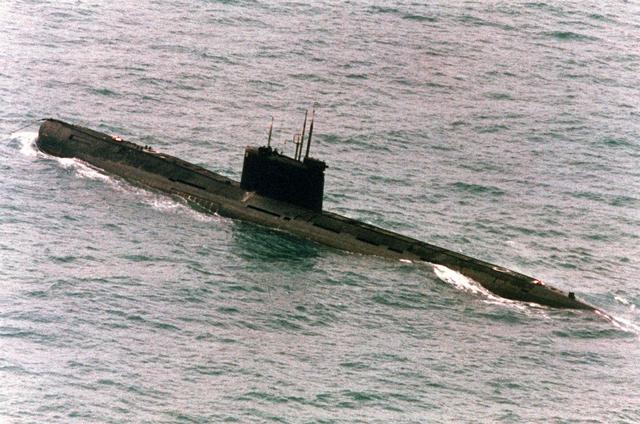
The B-443 class or Project 541B Som (“Catfish”), NATO “Tango” were a serie of diesel-electric attack submarines built in Krasnoye Sormovo, Gorkiy, Soviet Union, to replace the Foxtrot-class submarines of the Black Sea Northern Fleets. The first was completed in 1972, the last in 1982, and these 18 boats were built in two versions, the latter being a few meters/feet longer to shoehorn extra ASW missile equipment. The bow sonar was the same as Soviet nuclear attack submarines and the propulsion was identical to the later Foxtrot class but with far more battery capacity and were the fastest, deepest diving, longest ranging conventional submarine ever in the Soviet Navy due to the larger hull volume. They could for example stay for a whole week underwater at cruise speed before even snorkeling. They also combined new torpedoes and better sonars, and were intended to ambush Western SSNs at natural chokepoints. Their hull rubber coating earned them the nickname “rezinka”. They are now all retired. B-380, Black Sea Fleet, was decommissioned in 2016, scrapped at Inkerman in 2020. Three also survived as museum ships. #coldwar #tangoclass #submarines #SSK #sovietnavy #soviestkyflot
Development
The Submarines of Project 641B “Som” were among the last diesel-electric models produced un USSR and a modernization of Project 641 boats (“M”) or NATO Foxtrot. They were also the last “classic” converional attack subs before the arrival of the smaller Kilo class. They were essentially a repeat of the Foxtrot, double-hulled, designed at the Rubin Central Design Bureau for MT. Chief designer Z. A. Deribin and from 1974 his work was taken over by Yuri N. Kormilitsin. From 1973 to 1982, 18 were ordered, all at Krasnoye Sormovo shipyard (Nizhny Novgorod). The TTZ precised they had to conduct combat operations against enemy oceanic communications lines and station at forward/allied NATO naval bases. Their tasks include the destruction of enemy surface ships and assets, long-range operational reconnaissance, and convoys shadowing and attacks as well active minelaying also in front of coastal assets, ports and bases.
These large torpedo submarine project 641B from Central Design Bureau MT “Rubin” represented the third generation of Soviet post-war submarines. Chief designer was Z.A. Deribin was seconded by navy observer Captain 2nd Rank V.A. Marshev, and captain 2nd rank I.A. Kotsyubin afterwards.
Design of the class
They started with the same powerplant as the former project 641 submarines characterized by
a diesel-electric motor powerplant placing three diesel engines on the shaft line. However a modern Sonar suite was installed for the first time with the complexes NK, GAK, and BIUS. They also fiffered by having massively automated control systems. Acoustic protection was improved as their hull was covered with 6cm (2 inches) soundproofing coating tiles, whereas soundproofing measured were taken to mount on suspended frames and wrapped in rubber all noisy mechanisms, diesels and electric motors.
Living conditions were also much improved with all personnel provided with permanent sleeping places whereas officers and petty officers were housed in individual cabins, and ratings in 6-berth rooms. Their hull more suitable for underwater navigation than the Foxtrots due to a serie of hydrodynamic improvements as well. Despite sharing the same powerplant, their higher capacity batteries and modern radio equipment gave them an edge. The bow horizontal rudders could retract into the hull when not in use, breaking possible detection.
Hull and general design
As double-hulled boat, they had a modified upper hull, with an elevated bow end used as fairing for sonar antennas and main system, but also extra seaworthiness when surfaced, reducing noise when submerged, with a refined end of the outer hull close to the rudder as well. The cylindrical pressure hull ended in truncated cones made of hardened steel 22-35 mm (0.9 to 1.4 inches) thick, divided into seven compartments by strong bulkheads (see below). The main ballast was separated in ten trim tanks, a significant part of which were equipped with kingstons, used as fuel and ballast tanks.
The hull was separated in seven compartments:
-First (bow): torpedo compartment
-Second and fourth: bow and stern batteries
-Third: central post
-Fifth: diesel room
-Sixth: electric motor room
-Seventh: Residential.
-First, 3rd and 7th are fitted with sas and escape hatches for crew evacuation.

1 — main antenna of SJSC “Rubicon”
2— antennas of SJSC “Rubicon”
3 – 533 mm tubes
4 — bow horizontal rudder with collapse mechanism and drives
5 — bow emergency buoy
6 – cylinders, VVD systems
7 — bow (torpedo) tubes
8 – spare torpedoes with fast charging system
9 — torpedo loading and bow hatches
10 — aggregate enclosure “Rubicon” system
11 – second (bow living and battery) compartment
12 – residential premises, crew cabins
13 – nose (first and second) group systems
14 — fencing for battery circuit breakers
15 — navigation bridge
16 — gyrocompass repeater
17 — attack periscope
18 — periscope PZNG-8M
19 — Mast RDP (com) device
20 — Mast antenna radar “Cascade”
21 — Mast radio direction finder antenna “Frame”
22 — Mast antenna SORS MRP-25
23 — Mast antenna “Topol”
24 — conning tower
25 – third (central post) compartment
26 – central post and CC
27 — Housing partitions
28 — Auxiliary equipment (bilge pumps, hydraulic system, scrubbers, air conditioners).
29 — fourth (aft accommodation and battery) compartment
30 – aft living quarters
31 — aft (third and fourth) group Propulsion
32 — 5th (diesel) compartment
33 — auxiliary systems
34 – Diesels
35 – fuel and fuel-ballast tanks
36 — sixth (electric motor) compartment
37 — electrical panels
38 – GGED midline shaft tranmission, gearboxes
39 — aft anchor capstan
40 — 7th (aft) compartment
41 — aft hatch
42 – Creeping motors
43 — center line shaft
44 — stern emergency buoy
45 — stern rudder drives
Powerplant
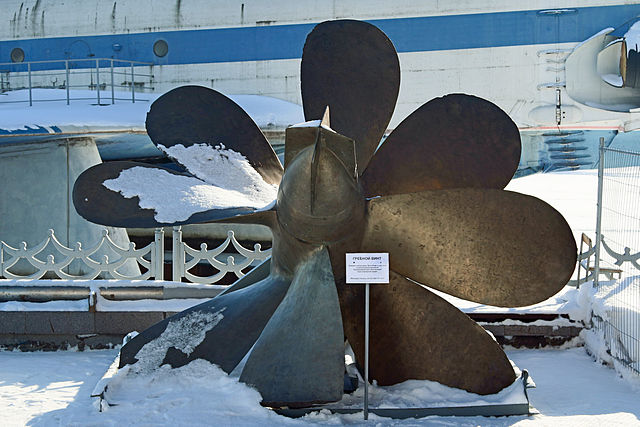
The Tango class started with essentially a repeat and improvement of the Foxtrot class powerplant, singular with its three shafts. All three propellers were complex (twin row, 2×4 bladed) under fairings. The powerplant consisted in three 2D42 diesels and one PG-102 electric engine and two 2 PG-101 electric motors. Each diesel provided up to 4.6 MW (6,200 shp), the three electric motors generated respectively 2,700 and 2x 1,350 hp. Electric power, total, was 5400 hp, and 18,600 hp for the diesels, so a total of 24,000 hp.
The game changer was a complete rearrangement of the batteries, which were smaller, using extra batteries for a greater top speed and autonomy compared to the Foxtrot class.
As a result, they were capable of 13 knots (24 km/h; 15 mph) surfaced and 16 knots (30 km/h; 18 mph) submerged.
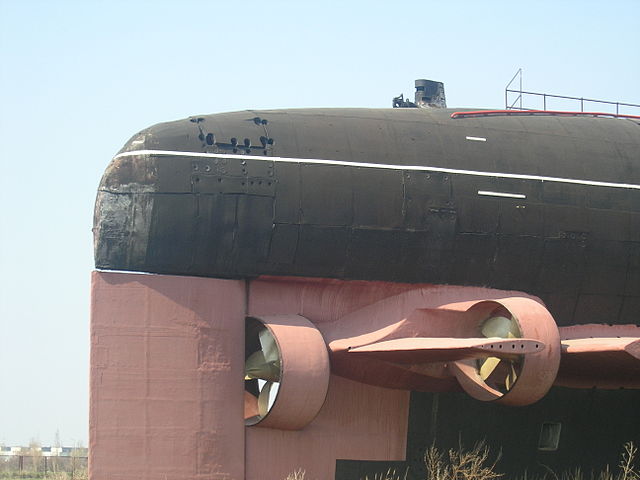
Armament
Unlike previously built Soviet submarines, only bow-mounted tubes were retained, but with increased torpedo reserves and a fast loading system and automatic fire control system.
No information on the models kept in storage.
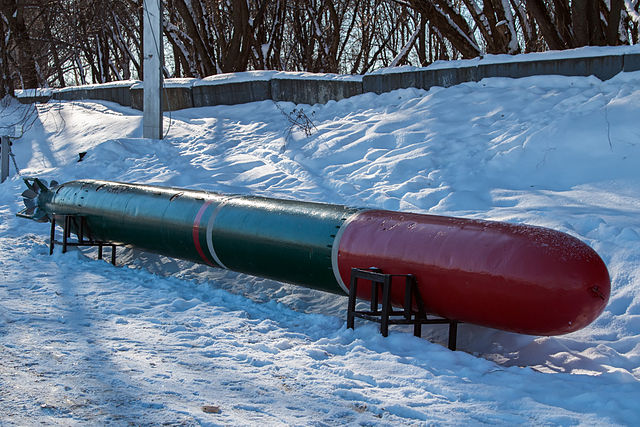
SET-53M:
The SET-53M (1964) weighted 3,263 lbs. (1,480 kg) for 307 in (7.800 m) long, warhead 220 lbs. (100 kg). Range/Speed 15,300 yards (14,000 m)/29 knots. Silver-zinc battery.
53-61M “Alligator”:
Introduction 1969. Acoustic wake following homing torpedo derived from the 53-57 torpedo, with improved homing system.
Warehad 672 lbs. (305 kg), range 24,000 yards (22,000 m)/35 knots using Kerosene-Hydrogen Peroxide Turbine.
SAET-60M (1969):
Passive acoustical homing torpedo. Weight 4,409 lbs. (2,000 kg), 307 in (7.800 m) lenght, 661 lbs. (300 kg) warhead, range 16,400 yards (15,000 m)/40 knots using Silver-zinc battery
53-65M (1969):
Acoustic wake following homing torpedo derived from the 53-61 torpedo.
Weight 4,630 lbs. (2,100 kg), 283 in (7.200 m) long, warhead 661 lbs. (300 kg).
Range/Speed 24,000 yards (22,000 m)/44 knots, powered by a Kerosene-Hydrogen Peroxide Turbine.
TEST-68 (1969):
First Russian wire-guided torpedo, derived from SET-53M. Active/passive acoustic homing 880 yards. Capable of 650 feet (200 m).
Weight 3,307 lbs. (1,500 kg), lenght 311 in (7.900 m), 220 lbs. (100 kg) warhead. 15,300 yards (14,000 m)/29 kts, Silver-zinc battery.
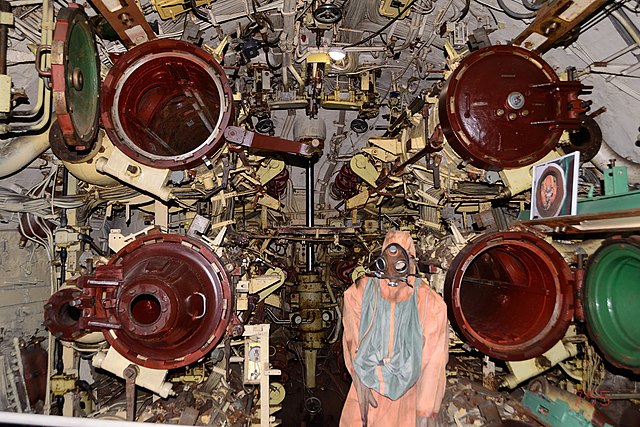
SET 71 (1971):
ASW wire-guided torpedo with active/passive acoustic homing. The range of the homing system was 880 yards (800 m). Could be used to depths of about 1,300 feet (400 m).
⚙ specifications SET 71 |
|
| Weight | 3,858 lbs. (1,750 kg) |
| Dimensions | 311 in (7.900 m) |
| Propulsion | Silver-zinc battery |
| Range/speed setting | 16,400 yards (15,000 m)/40 knots or 27,300 yards (25,000 m)/35 knots |
| Warhead | 452 lbs. (205 kg) |
| Max depth | 1,300 feet (400 m) |
| Guidance | wire-guided, active/passive homing |
Sensors
MRK-50 Kaskad radar
Radar, Surface Search, Short-Range (Early 1970s) range from 0.3 nm to 20 nm. 5 tpm, resolution 0.16 nm. Beamwidth 1/25. Peak Power 80000. Pulse Width 2. PRF 1500.
MGK-400 Rubikon sonar suite
Long Range sonar with piezoelectric ceramic compounds and electro acoustic transducers. 360° (0.05 Pa/Hz noise level). Can track 12 targets. Forward scan sector 30°, Range 16 km. Mine detection and Passage-through-narrows and coastline detection. 60 KhZ. Bearing measurement accuracy 1-10 kHz/10-30 kHz/30-60 kHz. Communication range 60km, identification 30km, HF communication range 20km.
MRP-25 ECM suite
NATO Squid Head (“Bald Head” + “Rim Hat” RWR Element) ESM RWR, Radar Warning Receiver. Max Range: 222.2 km
MVU-110 Uzel CCS
No data. System shared by the CHANGCHENG 364 class submarines (project 877EKM, 1994-1995). No data. Also shared by the Kilo class subs.
⚙ specifications Tango class |
|
| Displacement | 3,100 tons surfaced, 3,800 tons submerged |
| Dimensions | 91 x 9.1 x 7.2m (298 ft 7 in x 29 ft 10 in x 23 ft 7 in) |
| Propulsion | 3x shafts diesel 4.6 MW (6,200 shp), 3 electric motors 5700/5400 (2700 + 2×1350) hp |
| Speed | 13/14 knots surfaced, 15.5 knots submerged |
| Range | 14,000 nm at 7 kts surfaced, 450 nm underwater at 2.5 kts |
| Armament | 6 × 533 mm (21 in) bow TTs (24 or mines) |
| Max depth | 240m (788 ft) |
| Sensors | MRK-50 Kaskad radar, MGK-400 Rubikon sonar suite, MRP-25 ECM suite, MVU-110 Uzel CCS |
| Crew | 62 men (12 officers) |
Career of The Tango class SSK
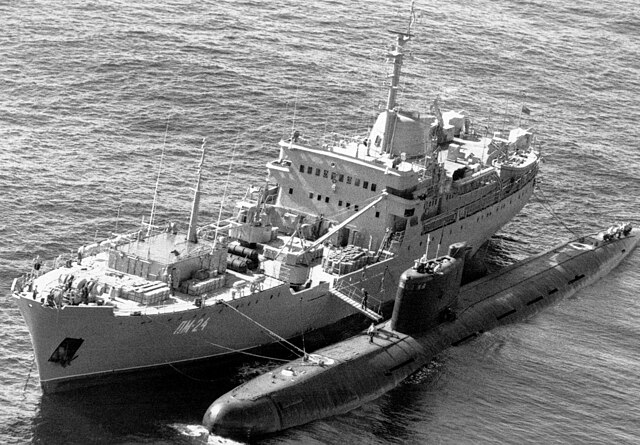
PM-24 resupplying B-498 (presumably) in 1986
From 1973 to 1982, 18 project 641B boats were accepted into service, and all of them were built at the Krasnoye Sormovo Shipyard in Gorky. After launching, they were planed in transport docks and moved along inland waterways, transferred to their permanent service post, where they underwent state tests. In the process of overhauls, they were equipped with the Pelamida sonar system while B-437 was the first. Project 641B submarines saw service in more areas thah previously planned. Full operational strength ended before 2001, mainly in 1995-1996. All boats of this project have now been withdrawn from the Navy. One of the boats of this project, the B-396 Novosibirsk Komsomolets boat, is installed in the museum and memorial complex of the history of the Russian Navy in the area of the Severnoye Tushino park. Also, the boat of this project can be seen in Togliatti, in the AvtoVAZ technical museum, where the B-307 boat is installed, delivered from the service site entirely on suspended pontoons. The cabin of the submarine B-380 is part of the Museum Exhibition of the History of the USSR Submarine Fleet in the Moscow Region, on the territory of the Mistral Hotel.
Note: Logs of these subs are too recent and not declassified yet.
 B-443
B-443
B-443, pennant 101 Krasnoye Sormovo, Gorkiy laid down on 17.9.1971, launched on 2.9.1972 and completed on 31.12.1973. She was stricken in August 1995.
 B-474
B-474
B-474, pennant 102 was from Krasnoye Sormovo, laid down on 27.7.1973, launched 2.9.1974, commissioned 31.12.1974, she was stricken on 10.1995.
 B-437
B-437
B-437, from June 1980 Magnitogorskiy Komsomolets. From 1992 renamed B-437. Pennant 103, laid down at Krasnoye Sormovo on 4.12.1973, launched 23.10.1974 and commissioned 30.9.1975. She was stricken in November 2001.
 B-498
B-498
B-498, pennant 104 was laid down at Krasnoye Sormovo on 23.10.1974, launched 30.7.1975 and completed on 31.12.1975. She was stricken in August 1995.
 B-515
B-515
B-515, pennant 105, laid down on Krasnoye Sormovo, laid down on 30.3.1975, launched 29.4.1976, completed on 29.12.1976. She was used for espionage, and patrol for the Soviet Northern Fleet, in service until April 2002. As she was long inactive extensive modifications were needed before she was turned into a museum ship, and many systems deactivated. She was purchased by Hamburg investors for one million euros, towed to Hamburg for another million euros. Modifications were done to provide visitors entry and exit points. She is now at St. Pauli fish market as “Submarine Museum Hamburg”.
 B-519
B-519
B-519, pennant 111, laid down at Krasnoye Sormovo, laid down 4.12.1975; launched 10.9.1976 and completed on 22.12.1976. She was stricken on 8.1995.
 B-290
B-290
B-290 pennant 112, laid down 5.8.1976, launched 25.4.1977, completed 25.9.1977 and stricken 8.1995.
 B-303
B-303
B-303 pennant 113 was laid down on 5.12.1976, launched on 6.9.1977, completed 30.12.1977 and she was stricken on 8.1995.
 B-146
B-146
B-146 was renamed in April 1991 Komsomolets Kazakhstan and back in 1992 B-146 again. Pennant 114. She was laid down on 5.9.1977, launched on 8.5.1978 and completed on 30.9.1978. She was stricken on January 1998.
 B-546
B-546
B-546 (pennant 115) was laid down on 8.2.1978, launched 27.9.1978, 29.12.1978 and she was stricken May 2002.
 B-30
B-30
B-30 (pennant 121) was laid down on 17.10.1978, launched on 12.5.1979, completed on 28.9.1979. She was stricken in 2001.
 B-215
B-215
B-215 (pennant 122) was laid down on 27.1.1979, launched 9.10.1979 and commissioned on 30.12.1979. She was stricken in October 1997.
 B-396
B-396
B-396 was renamed in May 1986 Novosibirskiy Komsomolets and back in April 1992, pennant 123. She was laid down on 31.8.1979, launched 17.5.1980, completed on 30.9.1980. She was stricken in January 1998.
 B-307
B-307
B-307 (pennant 124) was laid down on 7.3.1980, launched on 30.9.1980 and completed on 30.12.1980.
She was converted as a museum in May 2001.
 B-319
B-319
B-319 (Dec. 1988) was renamed Komsomolets Chuvashii and in February 1992 back to B-319 (pennant 125). She was laid down on 25.2.1980, launched 30.5.1981, commissioned on 25.9.1981.
She was stricken in Januarry 1998.
 B-225
B-225
B-225 (pennant 131), laid down 8 January 1981, launched 20 August 1981 and completed on 25 Dec. 1981. She was stricken on January 1998.
 B-312
B-312
B-312 (pennant 132) was laid down on 10 September 1981 and launched 22 May 1982, completed on 20.9.1982. She was stricken on March 1998.
 B380
B380
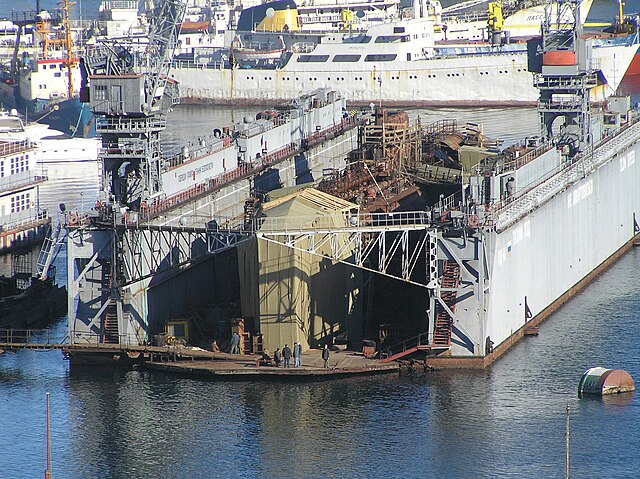
B-380 (renamed Gorkovskiy Komsomolets) and back in 1992 and by 2008 Sviatoy Knyaz Georgiy. She was Laid down at the Krasnoye Sormovo plant on 1982, February 8, Launched in Nov. 1982 while the crew entered into an agreement on patronage relations with the Komsomol committee of the Gorky Machine-Building Plant. She was thus renamed “Gorky Komsomolets” On December 30, 1982 and entered service on December 25, 1982 in the Black Sea Fleet, 153rd Brigade, 14th Div. in the South Bay of Sevastopol.
Under capt. 2nd R. Panasenko I.V. whe won the Prize of the Navy Civil Code for a succesful exercise by “sinking “the cruiser “Slava” as main target, despite being opposed by 2 BE-12 aircraft and 4 MI-14 helicopters. For this she replicated NATO subs zigzags until reaching 20 miles of the cruiser and approaching at 24 knots crossing data from the Rubicon and Uzel station, fired a 2-torpedo salvo with 53-65K practice models, two hits.
In 1987 she Took part in another mock sinking attempt but failed. In July 1988 she took part in the Navy Day parade in Sevastopol.
In 1991 she started an overhaul at Sevmorzavod (Shipyard No. 91) but funding was lacking and the crew was reduced. On 15 February 1992 her title “Gorky Komsomolets” was abolished; and by 1996, still incomplete, she was planned to be transferred to Ukraine, but the latter refused duen to her poor state. From 1996 to May 2000 she was laid up in the South Bay of Sevastopol and by June the Russian government decided to restore her and carry a modernization at Lazarevskoe Admiralty Yard in Sevastopol. She had the patornage of Nizhny Novgorod took patronage of the submarine;
In 2001 she was berthed in the Southern Bay of Sevastopol and by 2004 had a new crew members. By 2006 (September) she received the blessing of Archbishop Georgy of Nizhny Novgoro and in July 2007 she was visited by a delegation from Nizhny Novgorod headed by Deputy Minister of Construction A. Budakov. By April 2008 it was announced a completion by 2010 until all was cancelled under orders of A. Serdyukov and CiC V. Vysotsky after 1.248 billion rubles spent total. She was sent to the floating dock PD-16, the Southern Bay of Sevastopol. By November 2012 it was decided to reactivate her for the Black Sea Fleet and new restoration started in 2013. But by 2016 was announced instead she would await disposal with a competition for the dismantlement of 4 ships and 4 submarines but it was cancelled and she lays in drydock still by 2019. Bt December 15 on Sunday night, the large floating dock PD-16 supporting B-380 sank. The hull was later towed on pontoons to Inkerman for subsequent disposal and recycling commenced in April 2021 with her removed fin sent to the MISTRAL hotel in Istrinsky district, Moscow. Disposal in complete as of 2024.
Read More/Src
Books
Gardiner, Robert; Chumbley, Stephen; Budzbon, Przemysław, eds. (1995). Conway’s All the World’s Fighting Ships 1947–1995.
Miller, David; Jordan, John (1987). Modern Submarine Warfare. New York: Military Press.
Miller, David (1989). Modern Submarines. Combat Arms. New York: Prentice Hall Press.
Kuzin V.P., Nikolsky V.I. “USSR Navy 1945-1991”, IMO, St. Petersburg, 1996
Boechin I. “Buks of the second generation”, Tekhnika-Molodezhi, No. 6, 1996
Alexandrov Yu.I., Gusev A.N. “Warships of the world at the turn of the 20th-21st centuries”, part 1, St. Petersburg, 2000
“History of domestic shipbuilding”, vol. 5, Shipbuilding, St. Petersburg, 1996
Pavlov A.S. “Warships of Russia 2001”, Yakutsk, 2001
Apalkov Yu.V. “Submarines” vol. 1, part 2, Galeya Print, St. Petersburg, 2002
“Domestic submarines. Design and construction” under the general editorship of Academician of the Russian Academy of Sciences V.M. Pashin, Central Research Institute named after. acad. A.N. Krylova, St. Petersburg, 2004
Apalkov Yu.V. “Submarines”, Galeya Print, St. Petersburg, 2006.
Links
navypedia.org
deepstorm.ru/
russianwarrior.com/
deepstorm.ru/ B-380.htm
ru.wikipedia.org/
russianships.info/
en.wikipedia.org/ Tango-class_submarine
ria.ru/
rg.ru/
u-434.de
clubrmt.ru/
commons.wikimedia.org
web.archive.org podlodki
navweaps.com/
mdc.idv.tw/mdc/navy/china/kilo.htm
key.aero/ about the UEZL CCS
Videos
Model Kits
Project 641 B Som w/ Pelamida towed array (NATO name Tango): OKB Grigorov 1:700

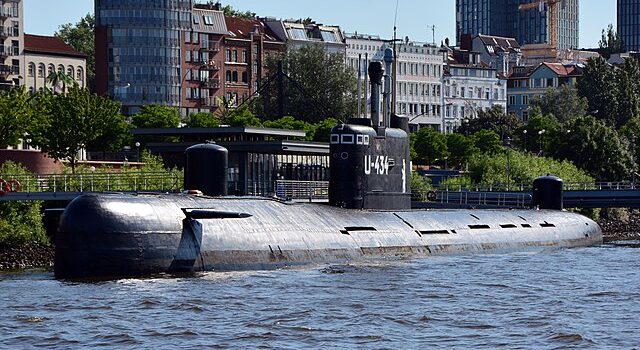
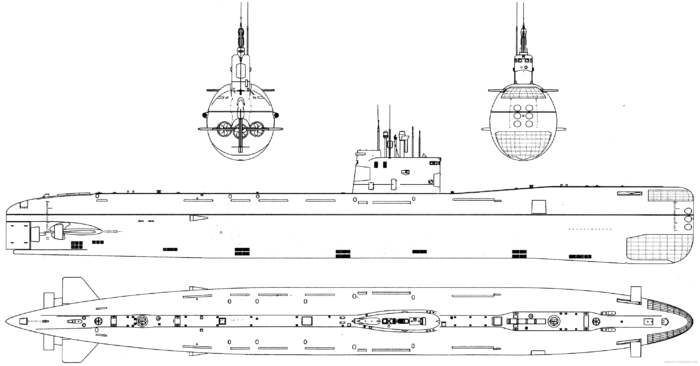

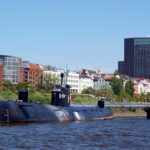
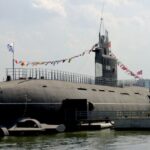

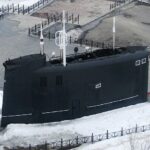



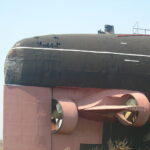
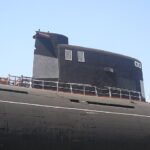

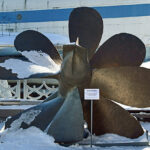
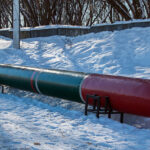
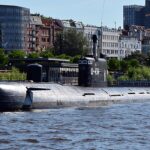

 Latest Facebook Entry -
Latest Facebook Entry -  X(Tweeter) Naval Encyclopedia's deck archive
X(Tweeter) Naval Encyclopedia's deck archive Instagram (@navalencyc)
Instagram (@navalencyc)





 French Navy
French Navy Royal Navy
Royal Navy Russian Navy
Russian Navy Armada Espanola
Armada Espanola Austrian Navy
Austrian Navy K.u.K. Kriegsmarine
K.u.K. Kriegsmarine Dansk Marine
Dansk Marine Nautiko Hellenon
Nautiko Hellenon Koninklije Marine 1870
Koninklije Marine 1870 Marinha do Brasil
Marinha do Brasil Osmanlı Donanması
Osmanlı Donanması Marina Do Peru
Marina Do Peru Marinha do Portugal
Marinha do Portugal Regia Marina 1870
Regia Marina 1870 Nihhon Kaigun 1870
Nihhon Kaigun 1870 Preußische Marine 1870
Preußische Marine 1870 Russkiy Flot 1870
Russkiy Flot 1870 Svenska marinen
Svenska marinen Søværnet
Søværnet Union Navy
Union Navy Confederate Navy
Confederate Navy Armada de Argentina
Armada de Argentina Imperial Chinese Navy
Imperial Chinese Navy Marinha do Portugal
Marinha do Portugal Mexico
Mexico Kaiserliche Marine
Kaiserliche Marine 1898 US Navy
1898 US Navy Sovietskiy Flot
Sovietskiy Flot Royal Canadian Navy
Royal Canadian Navy Royal Australian Navy
Royal Australian Navy RNZN Fleet
RNZN Fleet Chinese Navy 1937
Chinese Navy 1937 Kriegsmarine
Kriegsmarine Chilean Navy
Chilean Navy Danish Navy
Danish Navy Finnish Navy
Finnish Navy Hellenic Navy
Hellenic Navy Polish Navy
Polish Navy Romanian Navy
Romanian Navy Turkish Navy
Turkish Navy Royal Yugoslav Navy
Royal Yugoslav Navy Royal Thai Navy
Royal Thai Navy Minor Navies
Minor Navies Albania
Albania Austria
Austria Belgium
Belgium Columbia
Columbia Costa Rica
Costa Rica Cuba
Cuba Czechoslovakia
Czechoslovakia Dominican Republic
Dominican Republic Haiti
Haiti Hungary
Hungary Honduras
Honduras Estonia
Estonia Iceland
Iceland Eire
Eire Equador
Equador Iran
Iran Iraq
Iraq Latvia
Latvia Liberia
Liberia Lithuania
Lithuania Mandchukuo
Mandchukuo Morocco
Morocco Nicaragua
Nicaragua Persia
Persia San Salvador
San Salvador Sarawak
Sarawak Uruguay
Uruguay Venezuela
Venezuela Zanzibar
Zanzibar Warsaw Pact Navies
Warsaw Pact Navies Bulgaria
Bulgaria Hungary
Hungary

 Bundesmarine
Bundesmarine Dutch Navy
Dutch Navy Hellenic Navy
Hellenic Navy Marina Militare
Marina Militare Yugoslav Navy
Yugoslav Navy Chinese Navy
Chinese Navy Indian Navy
Indian Navy Indonesian Navy
Indonesian Navy JMSDF
JMSDF North Korean Navy
North Korean Navy Pakistani Navy
Pakistani Navy Philippines Navy
Philippines Navy ROKN
ROKN Rep. of Singapore Navy
Rep. of Singapore Navy Taiwanese Navy
Taiwanese Navy IDF Navy
IDF Navy Saudi Navy
Saudi Navy Royal New Zealand Navy
Royal New Zealand Navy Egyptian Navy
Egyptian Navy South African Navy
South African Navy






























 Ukrainian Navy
Ukrainian Navy dbodesign
dbodesign